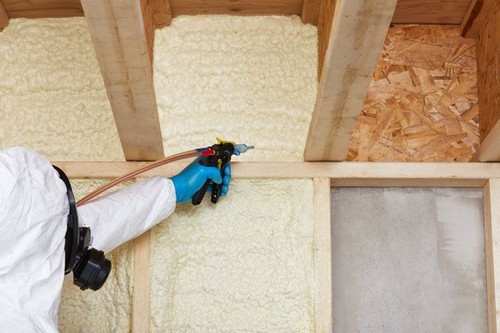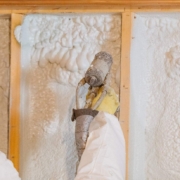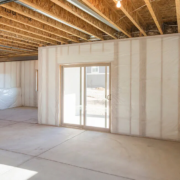Why Closed Cell Spray Foam Is Ideal for Moisture-Prone Areas
Moisture doesn’t knock before coming in. It seeps through cracks, sneaks up basement walls, and settles in crawl spaces like it’s paying rent. And if you’re dealing with humidity, leaks, or musty smells in your home or building, you’re probably tired of the constant battle. No one wants to keep drying things out just to have it happen again a week later.
That’s where insulation choices start to matter. Closed cell spray foam insulation services aren’t just about trapping heat. It also blocks moisture like a bouncer at a nightclub—and that makes a big difference if you’re tired of battling damp spots, swelling wood, or mystery mold patches.
Why Closed Cell Spray Foam Blocks Moisture So Effectively
Closed cell foam acts like a barrier—locking out moisture while adding strength to the structure. Unlike fluffy insulation that soaks up water like a sponge, this stuff just sits there, unbothered.
It’s dense, rigid, and tightly packed. Those small, closed-off cells trap neither air nor water, which means water can’t move through it easily—no matter how damp the space gets.
How It Works at the Cellular Level
- Closed cell foam is made of millions of microscopic bubbles sealed shut.
- These sealed cells create a rigid structure that resists water penetration.
- Once cured, it functions as a vapor barrier—keeping outside moisture from creeping inside walls or ceilings.
Application in High-Humidity Zones
- Crawl spaces, basements, and rim joists are common targets for moisture intrusion.
- Closed cell foam seals gaps and insulates while keeping condensation from forming on cool surfaces.
- It’s particularly useful in flood zones or coastal regions where groundwater and air humidity are constant issues.
Fun Fact: Closed cell foam can add up to 250% more structural strength to walls or ceilings—an unexpected perk when dealing with storm-prone regions.
Where It Performs Best Indoors
Closed cell spray foam isn’t a one-size-fits-all fix—but it shines in areas where moisture can’t be ignored. Think of spots where other insulation options give up first.
Basement and Foundation Walls
These areas are often cooler than the rest of the building, making them prime real estate for condensation. Closed cell foam creates an air-and-vapor seal that keeps moisture from soaking into concrete or block.
Crawl Spaces and Subfloors
Crawl spaces are notorious for trapping humidity and encouraging mold growth. A properly sealed and insulated crawl space using closed cell foam can drastically cut down on ground moisture and airflow from outside.
Roof Decks and Attics
In areas with extreme heat or heavy rainfall, roof assemblies can take a beating. Closed cell spray foam reinforces these structures while controlling humidity buildup under the roof.
Fun Fact: Closed cell foam has one of the highest R-values per inch—around R-6 to R-7—making it not just water-resistant, but highly efficient in thermal insulation too.
Comparison With Other Moisture-Resistant Materials
Closed cell foam performs differently than other moisture-management options. Understanding how it stacks up can help in picking the right material—especially when your biggest concern is dampness.
| Feature | Closed Cell Spray Foam | Open Cell Foam | Rigid Foam Board | Fiberglass Batt |
|---|---|---|---|---|
| Water Resistance | Excellent | Poor | Good | Very Poor |
| Vapor Barrier | Yes | No | Yes | No |
| Structural Reinforcement | Yes | No | Moderate | None |
| Best Use Areas | Basements, crawl spaces | Interior walls | Exterior sheathing | Attics (dry climates) |
| Mold Resistance | High | Low | High | Low |
Closed cell spray foam is the most water-resistant material on this list, making it ideal for environments that frequently battle moisture. Fiberglass tends to trap water and degrade, while open cell foam can absorb moisture and promote mold if used in the wrong location.

What to Watch Out For During Installation
Closed cell foam has real benefits—but only when installed the right way. If the install process skips steps or uses the wrong materials, the foam may underperform or even trap moisture where it shouldn’t.
Proper Substrate Prep Is Key
- Surfaces should be clean, dry, and at the right temperature range.
- Installing foam over damp surfaces can lead to poor adhesion and water retention.
Thickness and Layering Matters
- Closed cell foam is best applied in thin layers, allowing each one to fully cure.
- Applying it too thick in one go can create issues with off-gassing or uneven curing.
Use in Enclosed Cavities
- In wall cavities without adequate drying potential, foam should be paired with mechanical ventilation or dehumidifiers to avoid internal moisture buildup.
- Vapor drive (moisture moving from inside to outside) needs to be considered in humid climates.
Bad install can lead to trapped moisture or voids that reduce the foam’s barrier properties. Done right, it’ll lock out water like a pro.
Is It Enough to Prevent Mold?
Closed cell foam can resist mold, but it’s not a magical mold eraser. Moisture control is only one piece of the puzzle—ventilation and drainage matter too.
Why Mold Still Happens (Even With Foam)
- Moisture can enter from other sources: leaky pipes, roof leaks, poor drainage.
- Foam won’t absorb water, but it can trap it if other materials around it are damp.
How Closed Cell Foam Helps Prevent Growth
- By reducing airflow and humidity exchange, it deprives mold of the conditions it needs to grow.
- No organic content means it doesn’t feed spores, even in wet conditions.
When paired with moisture management strategies like vapor barriers, sump pumps, or dehumidifiers, closed cell spray foam becomes part of a complete defense system.
Conclusion
Closed-cell spray foam is one of the most reliable ways to manage moisture in buildings. Its dense, impermeable structure shuts out water, reduces humidity transfer, and reinforces surfaces—all at once. In areas where moisture is a constant problem—crawl spaces, basements, roof decks—it works quietly and consistently to keep the structure dry.
It’s not just about insulation—it’s about creating a stable environment that resists mold, controls condensation, and doesn’t deteriorate when wet. While no single material can do all the work alone, closed-cell spray foam gets you much closer to a low-maintenance, long-lasting result. Working with an experienced spray foam insulation contractor ensures the installation is done correctly for maximum protection and performance.
If moisture is a recurring issue, and you’re tired of patchwork solutions that fail after one storm or season, this is the insulation type to pay attention to.

FAQs
Is closed cell spray foam waterproof?
It’s highly water-resistant but not 100% waterproof in standing water. It blocks water from passing through and prevents vapor movement, making it ideal for damp locations.
Can closed cell foam be used directly on concrete or block walls?
Yes, as long as the surface is clean and dry. It adheres well and adds both moisture control and insulation to concrete foundations.
Will closed cell foam prevent mold in basements?
It can help significantly by stopping moisture from seeping in and reducing humidity. However, mold prevention also depends on drainage, ventilation, and keeping water out.
Is it safe to use in small, enclosed spaces like crawl spaces?
Yes, but the area should be ventilated during and after installation. After curing, it doesn’t emit harmful substances and is safe for enclosed use.
Does closed cell foam crack or shrink over time?
No. When installed properly, it maintains its shape and seal. It doesn’t shrink, settle, or crack under normal conditions.
Reviewer
Olivia Thompson has spent 10 years working in spray foam insulation, helping companies grow their visibility. She reviewed this article and provided valuable suggestions on how to better align the content with the needs and expectations of customers, ensuring it resonates with the target audience.











Leave a Reply
Want to join the discussion?Feel free to contribute!